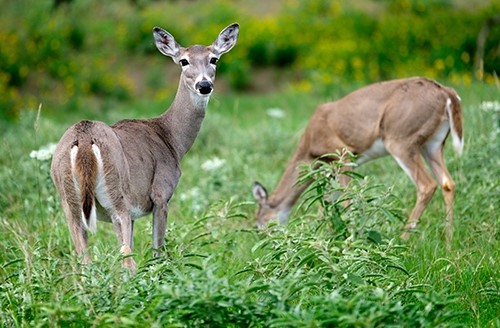Monday-Friday 8:00 a.m. to 5:00 p.m
-
City Hall Phone (830) 693-3830
- Stage 2 Water Restriction & Public Notice


During its meeting on September, 16, 2021, the City Council approved Wildlife and Deer feeding regulations, after complaints by residents of vehicular accidents with deer near or crossing roadways; the initiative was supported and recommended by Police Chief Johnny Liendo.
At a prior City Council Meeting on September 02, 2021, a representative of Texas Parks and Wildlife presented numerous reports to educate the City Council and residents that the over feeding of deer creates an artificial overabundance of deer, which in turn may lead to:
• Damage to Normal Wildlife Habitat
• Declining Deer Herd Health
• Deer/Vehicle Collisions
• Landscape and Garden Damage
• Neighbor versus Neighbor Battles (feed vs don’t)
• Overabundance followed by Huge Herd Die-offs
• Transmission of Lyme Disease to Humans
ATTRACTS DANGEROUS ANIMALS – Artificial feeding stations and practices, in addition to attracting deer, also attract other undesired and even dangerous animals such as opossum, racoons, rodents, skunks, and even predatory animals such as coyotes and cougars (both have been sighted in Cottonwood Shores). DEADLY TOXINS – in addition, all too often according to Texas Parks and Wildlife, people are feeding animals deer corn, which is an unhealthy food source for animals and can be hazardous to deer. Deadly toxins are frequently found in bags of deer corn, which can kill deer, birds, and other wildlife. In addition, concentrations of artificially fed deer and wildlife can possibly create a breeding ground for CWD (Chronic Wasting Disease).
DEADLY TOXINS – In addition, all too often according to Texas Parks and Wildlife, people are feeding deer and wildlife corn, which is an unhealthy food source for animals. Deadly toxins are frequently found in bags of deer corn, which can kill deer, birds, and other wildlife. In addition, concentrations of artificially feed deer and
wildlife can create a breeding ground for CWD (Chronic Wasting Disease).
City Secretary, Bobby Herrin, developed a draft ordinance for City Council consideration, patterned on regulations in Ordinance found
in other cities. The Ordinance, as approved, restricts feeding of deer and wildlife as follows:
• No feeding allowed within 50 feet of a roadway
• No automated or gravity feeders are allowed
anywhere on the property
• Hand feeding is only allowed past the 50 feet
roadway barrier
• Feeders a minimum of 6 feet high (bird feeders)
are allowed
A person who commits a violation of the Deer and Wildlife Feeding Regulation Ordinance will first be given a written warning. A second offence is considered a Class Cm Misdemeanor, punishable by a fine of not less that $75.00 or up to $500.00 per violation.
J. C. Hughes, City Administrator